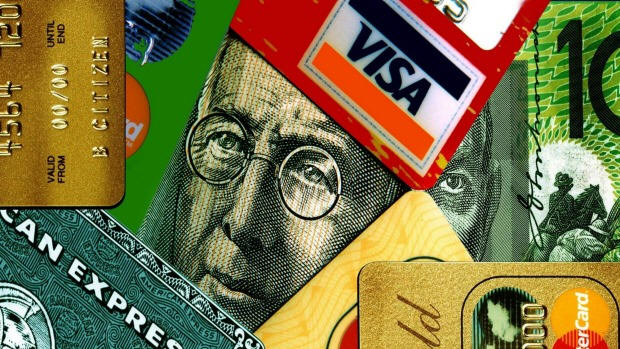Defined Terms and Documents
High credit card rates used to claw back revenue

Average credit card interest rates have not fallen since the RBA began cutting rates in late 2011. Photo: Greg Newington
Banks have failed to pass on lower interest rates to credit card customers during the current cycle of rate cuts, in an attempt to claw back weaker interest and fee revenue from spendthrift consumers.
Amid pressure for a Senate inquiry into credit cards, a key question facing the industry is why average credit card interest rates have not dropped in line with official rates set by the Reserve Bank.
Since the cash rate has plunged a record low of 2 per cent since late 2011, average credit card rates have edged up to 19.75 per cent, RBA figures show.
Experts said this was probably a response to the trend towards more customers paying their credit card bills in full each month, which has eaten into the revenue pool from card interest.
Mike Ebstein of MWE Consulting said there had been a sharp decline in the proportion of credit card debt that is accruing interest. Known as the "revolve rate," it has plunged from 73.7 per cent in late 2011 to a record low of 65.6 per cent. Click on: Cards still fitting the payment bill
"The percentage of balances on which interest is being paid has dropped. That really is a crucial factor," said Mr Ebstein, who denied banks were gouging.
The falling revolve rate means banks make less interest revenue from cards relative to the amount of funding they are supplying.
"They have to fund the total book, and they only get interest on 65.6 per cent of it at the moment," said Mr Ebstein, previously a general manager in ANZ Bank's payments division.
At the same time, fees are no longer surging as they once did.
Banks' income from credit card fees jumped more than three-fold between 2000 and 2008, RBA figures show, but it has risen by a far more modest 1.4 per cent a year since the 2009. This is also causing banks to look for revenue elsewhere.
Credit cards are still one of the most profitable products offered by banks, but only account for about 2 per cent of bank assets at at the two largest retail lenders, Commonwealth Bank and Westpac.
The push for an inquiry into credit card rates has gained momentum after officials from the Reserve Bank and Treasury this month said their high level warranted further investigation.
Treasurer Joe Hockey this week said he would not block Labor's push for an inquiry into credit card interest rates, after Opposition leader Bill Shorten proposed terms of reference this weekend.
The shift towards consumers paying credit card debts more aggressively is partly a response to the global financial crisis, but regulations have also encouraged the change in behaviour.
In 2012 banks were banned from sending out offers to increase credit limits unless customers had given prior consent, which halted a long-running increase average credit limits.
The chief executive of the Consumer Action Law Centre, Gerard Brody, said the reforms had probably contributed to interest-bearing debt coming down.
But he also argued the main cause of credit card interest rates remaining so high was a failure of competition.
Many customers were reluctant to switch cards because they were often bundled with other banking products, and customers had automatic deductions set up on their cards.
"People are very sticky with their credit cards, they don't shop around," Mr Brody said.
Mr Ebstein denied bank moves to leave their credit card rates unchanged amounted to gouging, saying it was an attempt to maintain business margins in the face of changes in the economic environment.
"It would be unreasonable to expect the industry to ignore avenues available to it to maintain their margin when other things are changing," he said.